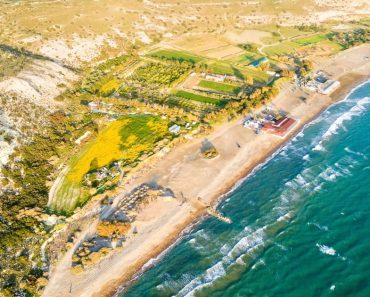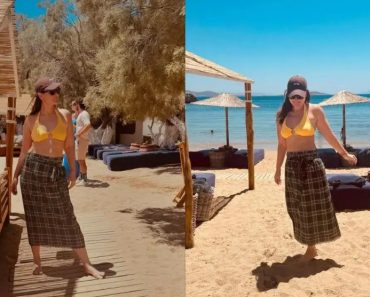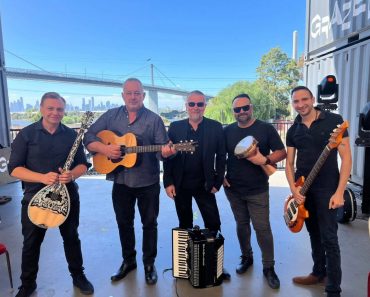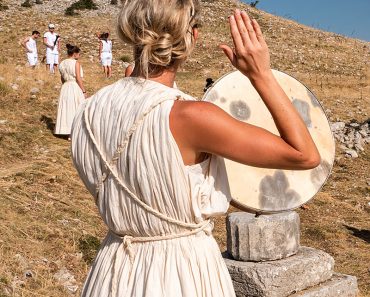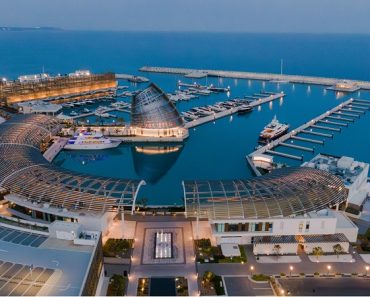Sampan chats with Eric Antoniou about his book ‘Rock To Baroque’ and the immigrant experience.
The first face we encounter in Eric Antoniou’s collection of music photography is David Bowie’s. There he is on the front cover, black and white, under the spotlight with his short blonde hair and carefully tailored suit jacket. The photo captures Bowie probably right before he’s about to pull the microphone from its stand. He seems to be seeing something in the distance and he’s about to tell the story. Flip the book over and there’s Leonard Bernstein on the back cover, in the twilight of his career, probably post-performance. He’s in a tuxedo and holding a drink in his huge right hand. The picture is lit only by a candelabra on the wall behind him, and the look on his face seems to be equal parts resignation and disdain. He’s shown us all he knows and he’s under no obligation to show us anything else.
It doesn’t take long to see a pattern in Rock To Baroque: Four Decades of Music Photography – a work that’s equal parts beautiful, melancholy, kinetic, and powerful. Perhaps there’s a reason Bowie graces the cover. Few other performing artists so definitively followed the mandate of sound and vision, and that’s in the essence of these often quite beautiful artist action shots. Antoniou is equally at home taking portrait shots (Bernstein, Lenny Kravitz, Michael Stipe among others) and action (like Pete Townshend, Mick Fleetwood, and Dwight Yoakam.) The big thrill of this book is seeing how seamlessly Antoniou straddles these styles. The portraits are at times achingly beautiful (an impossibly young looking David Byrne from 1993) and bloody (the rioting crowd at a legendary Green Day concert at the Hatch Shell in Boston in September 1994). These are not staged and artificial impressions of an artist at work or relaxed. Antoniou’s uncanny ability to involve himself in but not interrupt these artists and their performances is a definite through line within the visual text of this book.
Artists who had their first brush with fame in the Boston area are generously represented in these pages. There’s a two page portrait spread of a defiant Dropkick Murphys, performance shots of Mighty Mighty Bosstones and Tracy Chapman, and an endearing picture of legendary WBCN Program Director Oedipus with Aimee Mann back in 1988. Peter Wolf, who looks the same now as he did in 1997, is seen sitting in a stairwell during a Cambridge reading of “Howl.” Saxophonist Grace Kelly appears in a kinetic action shot that resonates in your ears. Donna Summer, looking as luminous as she did when she was alive, is revived in a 1989 backstage portrait. Her heyday of the 1970’s was gone, but she still had that certain something and this picture captures it.
There is a clear method to the way these pictures are presented and it’s seen in four pairs of full page photos. Tom Waits and Rickie Lee Jones, former paramours and artistic partners, appear from either end of the 1990s. Frank Sinatra and Harry Connick, Jr. appear in performance shots from 1990 and 1991 respectively, the crooner in his final years and the heir apparent. Etta James and Janet Jackson are here, from 1990s performances, looking ferocious and defiant. There’s Carly Simon and Judy Collins visiting from 1995 and 1988, female singers still with us who toiled in different chapters of the same American songbook.
How do you capture a definite tone or a time over the past forty years? It’s impossible to find an absolutely consistent through line besides the mandate of sound and vision combining to create some sort of incomprehensible magic. Former Poet Laureate Robert Pinsky writes in this book’s Prologue that “light is a form of motion.” He argues effectively that Antoniou’s skill of “becoming almost invisible” allows him to move his lens “…towards where it needs to be…when a unique action is revealed by light.” Other text provided by local music writer luminaries like Jon Garelick, Jim Sullivan, and Elijah Wald speaks to the catholic approach to music seen in these pictures.
Whether it’s Bob Dylan in a bewigged 2002 performance at Newport, The Rolling Stones being slinky and dangerous, the seemingly life-threatening punk scene in Boston, or Wynton Marsalis in his perfectly tailored suits at the Newport Jazz Festival in 1994, this is a book featuring the heralded and unsung. With that in mind, Sampan spoke with Eric Antoniou about the immigrant experience in rock photography and the role that might have played in his ability to navigate through the scene then and now.
Sampan: Tell us about Kerasia in central Greece. What was it about that area of your home country that steered you towards photography? What were you hearing on your Radio Shack Flavoradio? What were the first images captured by your Agfamatic 50 point-and-shoot camera? How did you think the United States would seem to appear and what materialized once you got here?
Antoniou: Kerasia is the place of my birth and I visit every year. This is where I took my first roll of black and white film with my point-and-shoot camera. A friend and I hiked the mountains and took portraits and landscapes. I still have these photographs! There were framed B&W photographs on the walls of my house. Besides the camera, my other prized possession was the transistor radio that my father brought from Boston. I took it everywhere I went. It was an AM only radio so there were a few music stations I could get.
The United States seemed so far away from my little village. There was this fantasy created by movies and television that made it look utopian. The reality was very different. I saw my first homeless person in my life riding on a bus in downtown Boston in freezing temperature.
There was a lot of hard work when I first came to this country. I was working a couple of jobs for a while or working and going to school. With hard work and some good fortune, I was able to do what I dreamt of, photography.
Sampan: The big names in this book are great to see, especially how you immortalized their youth of thirty years ago. More interesting to this reader, though, were the faces and names I didn’t know: Niko Souvatzis, Dionysis Savvoupoulos, Petros Plakias and Marchel Khalife. What do they evoke to you about Greece and what do you want readers to understand about your country?
Antoniou: Music is so vast that it’s impossible to even know all the Greek musical genres!
Marchel Khalife is a well known Lebanese oud player and there are some similarities with Greek music. Niko was a good friend who introduced me to rembetika music, the Greek blues! Savvopoulos is a giant in Greek music over the last 60 years. Plakias was the first musician that I ever saw perform in Kerasia. I grew up listening to Greek music on the radio and still do via the internet. In my teens, I started to listen to foreign music and got exposed to many genres. From Rock to Baroque!
Sampan: Who were your photographer role models? Do you think being an immigrant has given you an advantage as a photographer here or has that border long been erased?
Antoniou: Growing up in Greece my uncle Alekos was the village’s photographer.
I liked documentary photography and went to school for photojournalism. Henry Cartier Bresson, Andre Kertesz were early influences. I like Sebastiao Salgado who just passed.
In terms of music photography, I am a fan of Jim Marshall. I have a photo of him in the book. As an immigrant, you cannot escape looking at things from the outside.
The interesting thing is that you look at your own country from the outside as well!
At times language was a handicap especially early on.


